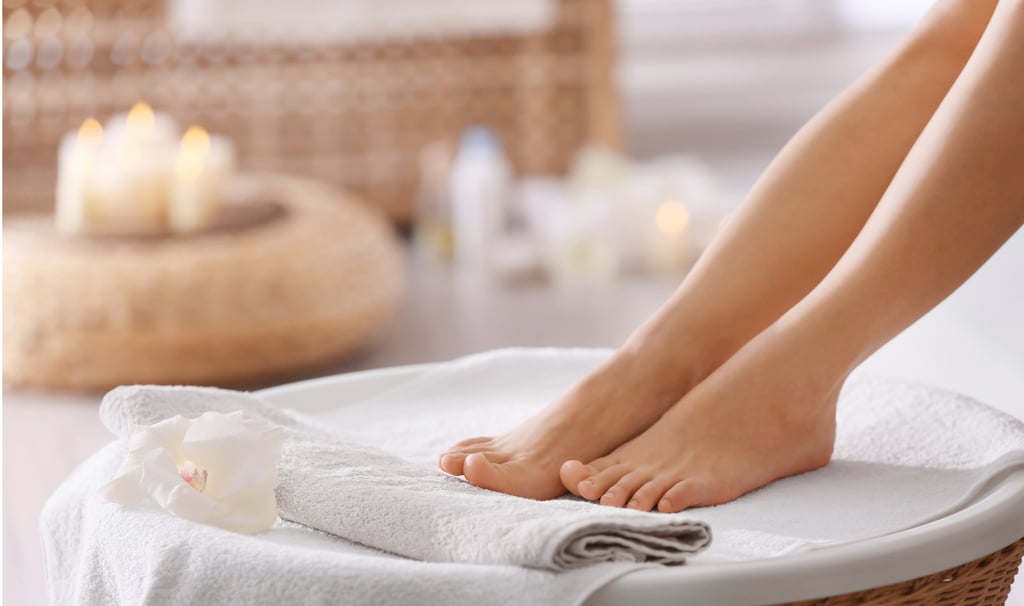Foot health: essential care to keep your feet healthy every day
Discover how to care for your foot health with simple and effective tips. Learn daily habits that prevent mycosis, cracks, and pain, keeping your feet always healthy and comfortable.
10/13/20254 min read


The foundation of your well-being is in your feet
Have you ever stopped to think about how many steps you take a day? Your feet support your entire body, cushion impacts, and allow mobility — and yet, they are one of the most forgotten parts of daily care. Neglecting foot health can cause discomfort, pain, and even more serious problems, such as calluses, mycosis, cracks, and poor posture. In this article, you will learn how to care for your foot health simply and effectively, with practical guidelines that make a difference in your daily life. Small changes in routine can ensure comfort, disease prevention, and a better quality of life.
1. Why caring for foot health is so important
The feet are the body's supporting base and have more than 30 joints and 100 muscles, ligaments, and tendons. Even so, many people only remember them when a problem arises.
Taking good care of your feet is essential because it:
Avoids pain and inflammation in the ankles, knees, and spine.
Prevents mycosis, cracks, and calluses.
Provides well-being and lightness.
Helps with correct body posture.
Improves blood circulation.
Make foot care a daily habit — they support your body, so they deserve your attention.
2. Daily hygiene: the first step to healthy feet
Proper cleaning is essential to avoid the buildup of sweat and bacteria. Follow these simple guidelines:
Wash your feet every day with warm water and neutral soap.
Dry thoroughly, especially between the toes, to prevent the growth of fungi.
Avoid soaking your feet for too long (such as soaking for more than 15 minutes).
If possible, use individual towels for your feet.
Extra tip: add a few drops of tea tree essential oil (melaleuca) to some warm water — it has natural antifungal properties.
3. Hydration: the secret to preventing cracks and dryness
The skin on the feet tends to be drier because it has fewer sebaceous glands. Therefore, hydration is essential to maintain softness and prevent painful fissures.
Use specific creams for the feet (preferably with urea, glycerin, or shea butter)
Apply at night, massaging gently until fully absorbed.
Avoid applying cream between the toes, as excess moisture favors fungi.
In cases of deep cracks, seek a dermatologist for appropriate treatment.
One minute of hydration a day is enough to keep your feet beautiful and healthy.
4. Nail care: prevention of ingrown nails and infections
Cutting nails incorrectly is one of the main causes of ingrown nails and inflammation. Follow good care practices
Cut your nails straight, never rounded.
Use sanitized scissors or clippers.
Avoid removing cuticles, as they protect against bacteria.
Do not share manicure or pedicure instruments.
If you notice redness, pain, or discharge, seek a podiatrist.
Tip: after bathing, nails become more malleable — this is the ideal time to cut them.
5. Appropriate footwear: comfort and health go together
Wearing inappropriate footwear is one of the main causes of calluses, blisters, and foot pain. A good shoe needs to respect the anatomy of your feet.
When choosing footwear, observe:
It should have an appropriate shape and space for the toes to move.
Avoid very high heels or narrow toes for daily use.
Prefer breathable materials, such as genuine leather or natural fabrics.
Alternate footwear to prevent the accumulation of sweat and odors.
Avoid walking barefoot in public places, such as changing rooms or swimming pools, to prevent mycosis.
Choosing footwear well is an investment in your comfort and long-term health.
6. Exercises and stretching: strengthen your feet
Os pés também precisam de movimento para se manterem fortes e flexíveis.
Alguns exercícios simples podem ajudar a melhorar a circulação e prevenir dores.
Try doing daily:
Rolling a tennis ball under the soles of your feet for 2 to 3 minutes.
Making circular movements with your ankles.
Trying to pick up small objects with your toes.
Walking barefoot on safe surfaces (like grass or sand), stimulating natural musculature.
These exercises help with mobility, balance, and injury prevention.
7. Common problems and how to prevent them
Even with care, some problems may appear. Knowing how to identify them and act early is essential.
Among the most common are:
Calluses and corns: caused by constant friction. Use insoles and comfortable shoes.
Athlete's foot (mycosis): avoid humidity and use cotton socks.
Foot odor (bromodosis): change socks daily and dry your feet well.
Heel cracks: intensify hydration.
Ingrown toenails: always cut straight and avoid tight shoes.
If you notice pain, persistent itching, or wounds, seek a dermatologist or podiatrist — early treatment prevents complications.
8. The role of podiatry in foot health
The podiatrist is the professional specialized in the clinical care of the feet. Consulting a podiatrist regularly is not just aesthetics but a measure of preventive health.
This professional can:
Perform a deep and safe cleaning of nails and cuticles.
Treat calluses, cracks, and mycosis.
Evaluate the gait and indicate corrective insoles, if necessary.
Identify problems that require medical attention.
Tip: semi-annual visits to the podiatrist help keep your feet in perfect condition and prevent chronic problems.
9. Diet and hydration: care begins from within
ust like skin and hair, your feet also reflect what you consume. A balanced diet and good water intake help circulation and skin regeneration.
nclude in your diet:
Fruits and vegetables rich in vitamin C (orange, strawberry, bell pepper).
Foods with vitamin E and omega 3 (avocado, nuts, fish).
Plenty of water, to keep the skin hydrated and elastic.
Care for your feet from the inside out - hydration and nutrition are powerful allies.
10. When to see a doctor
Not all foot pain or discomfort is simple. Seek medical guidance if you notice:
Persistent pain or swelling.
Wounds that do not heal.
Changes in skin color or nails.
Constant tingling.
These signs may indicate circulatory, orthopedic, or dermatological problems, and deserve professional attention.
Conclusion: healthy feet, lighter life
Caring for your feet is more than a matter of aesthetics — it's an act of self-love and prevention. With small daily habits, you can ensure comfort, balance, and quality of life. Remember: they support you all day long, so return this effort with care and attention.
Start your foot care routine today. Small daily actions guarantee lighter, healthier, and happier steps!
Health
Tips for a healthy and balanced life.
© 2025. All rights reserved.
Well-being
Privacy Policy
Terms and conditions
